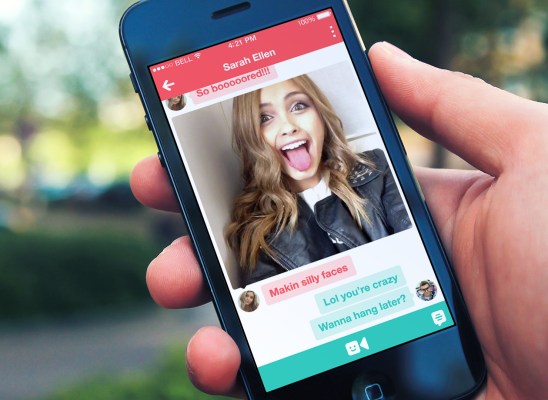Twitter’s Vine has introduced a feature that allows you to message other users directly via video. This adds both a direct messaging channel and video clips to its messages, a big addition to Twitter’s video app.
There is a direct parallel to be drawn here between Instagram’s Direct image messaging feature, obviously — and it goes hand in hand with Twitter’s renewed interest in its direct messaging channel. The allegory is interesting, as there isn’t a lot of public evidence that Direct has had any real traction. Still, it allows Twitter to experiment with video messaging in a separate silo, and it does make some sense to start with Vine before adding video messaging to Twitter.
You create a new Vine message by tapping on the Messages section, recording a video and sending it off. You can send to multiple recipients, but all of the conversations are one-to-one — much like competing messaging app Snapchat. If you send to multiple people, you’ll get separate threads for each one.
Notably, you can send Vine messages directly to anyone in your address book, regardless of whether they have Vine or not. This leverages your “private graph” in a similar way to WhatsApp’s early strategy. Twitter is likely hoping that this will spur growth much in the same way.
Offering a backchannel will also allow users to side-step the increasingly polished and professional community of Vine creators. This doubtlessly creates a barrier that stops some people from sharing because it’s not “good enough” to sit in their feeds. Like Snapchat, this allows people to post silly, stupid or funny videos that may not be as polished — or as pretty — directly to their friends. 
Vine messages are split between friends and “others,” delineated by the people in your network and those outside. You can choose to only get messages from people you follow or friend in the settings section. This version of the app also introduces color selections for profiles and is available on both iOS and Android.
There are some immediate questions, of course. Will brands and advertisers be allowed to utilize the messaging feature to pitch their wares? This seems likely, but the built-in privacy controls should allow people to minimize that. If it does roll out to advertisers, I’d say it’s not likely to do that right away. I also question the inability to start group chats. Was this a technical limitation or something that grew out of a design decision? Though Instagram direct has its faults, I still use it fairly regularly with friends and enjoy the group discussions that come out of posting images. I’d love to see what sending groups of video messages back and forth looks like. (For that matter, I’d like image replies on Instagram, but oh well.)
The experience seems fairly straightforward, and was surprisingly pleasant to use, for the few minutes I’ve played with it so far. There is a quick reply option, à la Snapchat, that lets you fire off an instant response, as well as the full suite of video tools. There’s a certain expanded sense of context that replying in video gives you — especially when emoting. Text messaging is often prone to misunderstanding because it’s hard to convey your mental or emotional state; that’s where emoticons came from. But video expands way beyond emoticons and could add some nice human cues to messaging — if it gets adopted.
When asked about the brand’s aspect, Twitter said only that “Vine messages are available to all users,” which means that yes, if a brand has a Vine account they can probably send them. Which is why there are those privacy controls, most likely.
As far as sending messages one-to-one only, Twitter said that it was about design and user experience. “We thought a lot about the overall experience and how to create a feature that makes messaging on Vine fun, easy and unique. Ultimately, we felt that the best way to introduce Vine messages was with one-to-one conversations.”
This move by Vine doesn’t telegraph Twitter’s interest in offering its users a direct messaging channel any harder than its own efforts to build out DMs. It’s been working on that for a while now after neglecting the feature for years. But it does offer the company a way to attempt to compete with apps like Snapchat and Instagram, as well as the large messaging apps like Line, WhatsApp, Facebook Messenger and WeChat.
Additional reporting by Josh Constine.
